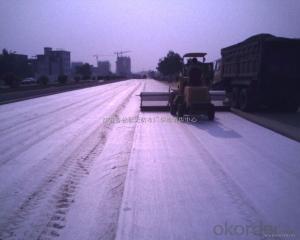When it comes to construction of a strong, reliable and barrier system, using a geomembrane is inevitable. A geomembrane is a flexible type of material that prevents the movement of any fluids or gases. However, having just a geomembrane alone cannot help; it must be installed properly and connected in order to create an uninterrupted barrier. This is where the ‘maquina para pegar geomembrana’ comes into play.
A ‘maquina para pegar geomembrana’ also known as a Geomembrane welding machine is specially designed equipment for joining two pieces of geomembrane together. During the process of building any barrier system, this step is very critical as there should not be any spaces or leaks that may weaken the whole structure. The machine does this by heating up the edges of the two sheets until they can melt and then be joined together making them resistant to efforts due to environmental influences and mechanical forces.
Importance of Correct Installation
The first thing one needs to do when installing a geomembrane is ensure it is done properly. In order to prevent weak spots from developing on the membrane’s surface caused by folds or wrinkles, materials are laid out without such imperfections. Then with use of ‘maquina para pegar geomembrana’ one joins edges across each other forming continuous surfaces without interruptions at all along its length line. Poorly installed g eomembbra nes can cause leakage rs an d sy stem f ailu re s hence the significance of this stage.
The Role Played by Welding Machine
This ‘maquina para pegar geomembrana’ plays a massive role in creating a barrier made up of geotextiles. It i s n ot just like any other tool but rather its fundamental component that ensures success in projects undertaken. Being able to handle different types of membranes such as HDPE, LDPE and PVC makes it versatile which means that it can be used for different purposes. The welding process is done in a controlled manner so as to create a strong bond between the geotextiles.
Factors Affecting Weld Quality
There are several factors which affect the quality of welds produced by the ‘maquina para pegar geomembrana’. These include the types of geomembrane being utilized, environmental conditions and how skilled the operator is. The machine must be set properly to accommodate certain properties of the geomembrane including its thickness and material composition. Additionally, temperature and humidity levels may influence the welding process; therefore, adjustments might need to be made for better results.
Operator’s Skill and Expertise
The operator’s skills and expertise are very important in order to achieve perfect weld jointing. The ‘maquina para pegar geomembrana’ has to be used correctly by an operator who makes necessary changes as per site conditions at all times. This involves adjusting temperature or speed during welding in order to get optimum bonding. Geomembrane installation success depends on whether there is a careful operator or not.
Maintenance and Troubleshooting
Appropriate care must be given to maquina para pegar geomembrana with a view of increasing its durability as well as performance levels. Regular cleaning along with checking of all parts will help identify any problems before they develop into bigger ones. In such cases when troubleshooting common issues like uneven welds or machine malfunctions, one should follow manufacturer’s guidelines while seeking professional assistance if needed too.
The Future of Geomembranes and Welding Technology
Geomembrane barriers are increasingly in demand, which calls for more advanced welding technology. To meet these demands, the ‘maquina para pegar geomembrana’ is changing with new versions to make it efficient and reliable. This includes automation, advanced control systems, and the ability to handle different materials and applications.
Conclusively, ‘maquina para pegar geomembrana’ is a crucial part of constructing any geomembrane barrier. It plays a critical role in ensuring that such barriers remain intact. Knowledge on factors that affect weld quality, the operator’s role, as well as maintenance can help us to ensure our success by making our installation long-lasting. With advancing technology; we can expect future improved efficiency and reliability of welding geomembranes.







